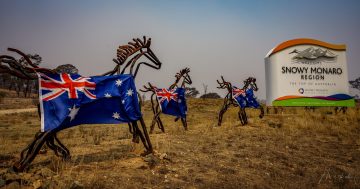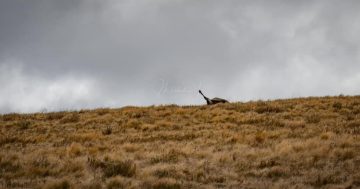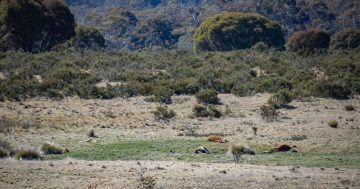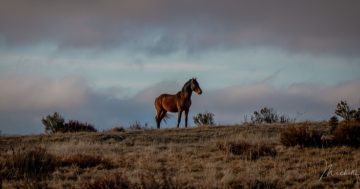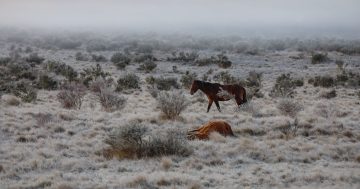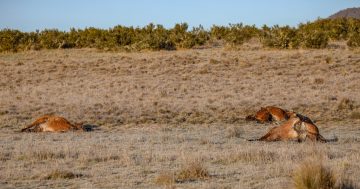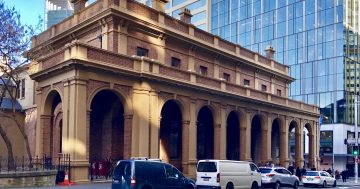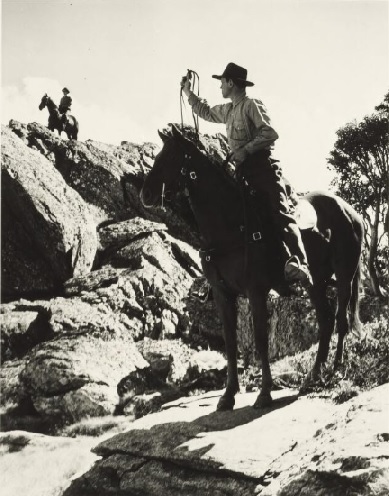
George Day signalling to his companion Gordon Day during a brumby roundup, ca.1945. Photo: Fitzpatrick, Jim (1940)/NLA.
Monday morning, weather permitting, the escalating thudding chattering sound of sharpshooter-bearing choppers will herald the end, locals say, to well over two centuries of the brumby bloodlines of southern Kosciuszko National Park.
The October 2023 survey of wild horse populations in KNP indicates the estimated population is between 12,934 and 22,536 horses, with a best estimate of 17,432 remaining. Those numbers are disputed by brumby advocates who have financed an independent count.
But between now and October 2024, wild horses in the north and south of the park, 6900 square kilometres, will be targeted in a bid to reduce numbers to 3000 in retention areas by 2027.
Local Mick Flanagan reckons it’s too late for them. He’s concerned the aerial cull will wipe out remaining heritage mobs occupying that area, contrary to state legislation.
“They’re talking 15 per cent of the total population of brumbies is in the south – I mean 15 per cent of what?” he said.
“But OK based on their figures we’re talking maybe around 2500 horses – take out the number already culled which is maybe 800 horses – you don’t need to be a scientist to work out there are next to no horses down here,” he said, “and of the, say 1700 remaining, half would be stallions leaving around 850 mares many of which will be too young or old, or infertile, to breed.”
A butcher by day and bushman of note, Flanagan’s block of land sits three kilometres from the NSW-Victoria border near Ingeegoodbee.
Nestled between the remote rugged Byabo and Pilot Wilderness areas, its namesake river is an angler’s paradise.
Here, as a stouthearted 16-year-old, young Mick would tear through the bushland on horseback as a brumby runner, chasing, roping, corralling and capturing the wild horses to sell.
The tradition of “running brums” was borne from the culture of mountain cattlemen whose huts and runs still pepper the mountains.
The State Government last year got the go-ahead to deploy aerial shooters to reduce the number of wild horses across the entire park under an amendment to the Kosciuszko National Park (KNP) Wild Horse Heritage Management plan.
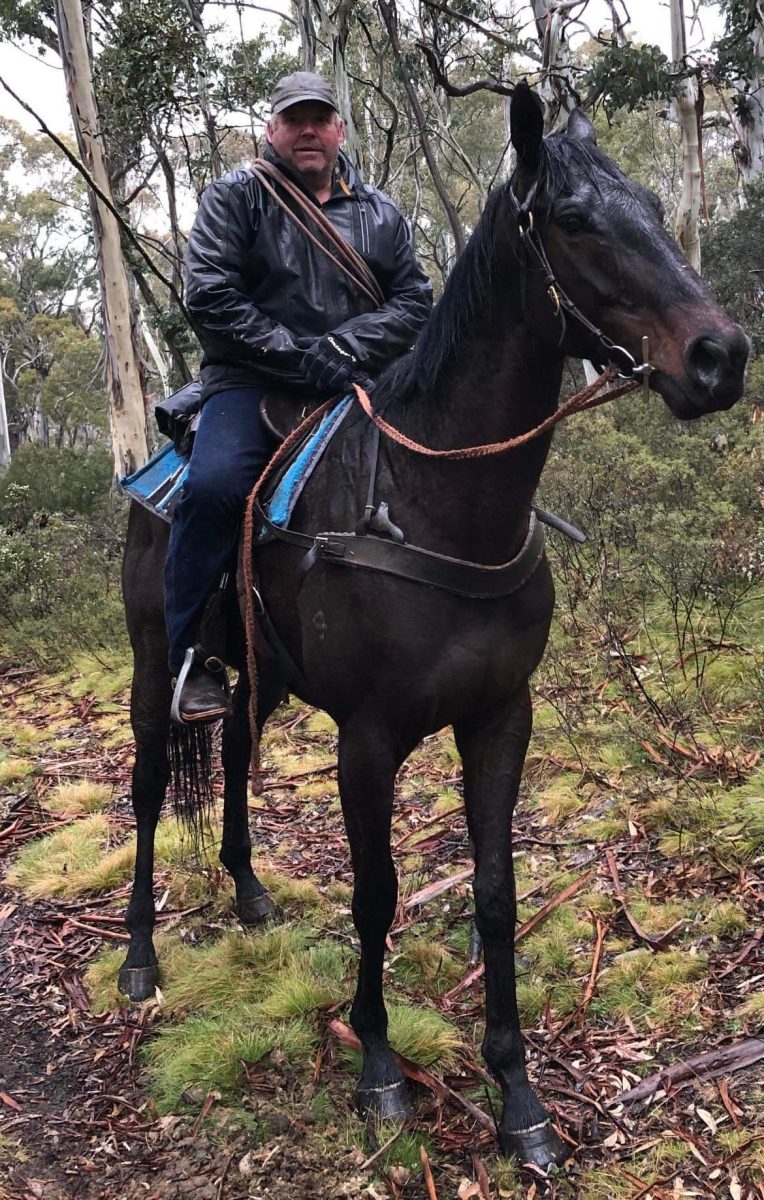
Mick Flanagan says he enjoys seeing brumbies in KNP. Photo: Supplied.
The initial month-long aerial culling operation, between 4 March and 28 March, requires closing areas of KNP south of the Alpine Way to the KNP boundary.
Operations in the northern section of the park begin from 7 am on 24 April, to 7 pm on 4 October, targeting north of the Snowy Mountains Highway and east of the Goobarragandra Powerline Road, close to the NSW-ACT border.
Thirty-eight years on, now more into running cattle than brumbies, Mick Flanagan says locals don’t believe the brumby cull in the south is necessary.
“None of us want this and it isn’t the horses that are the problem,” he said.
“When I first rode in the bush as a kid, it’d be odd to see a deer or pig, and if we did, it was probably a novelty,” he explained, “but now there are so many of the buggers, to see a horse is a novelty.”
Bushfires in 2003 marked the environmental turning point when 50 per cent of the wild horse population was destroyed or pushed north. Mick says the alpine wilderness was swiftly overtaken by impassable scrub and the national park now provides a safe haven for feral species.
“You don’t even know there are pigs there until you’re on top of them. The deer are so flighty and nimble, I don’t know how anyone could get a shot off. But horses are an easy target,” he said.
Contrary to the heritage management plan geared to protect the brumbies, the 2018 Kosciuszko Wild Horse Heritage Act, Mick believes NSW National Parks and Wildlife Service (NPWS) intend to strip the park of all horses.
Localities within southern KNP identified as heritage significant are Pilot Wilderness, Byadbo Wilderness and Black Jack Mountain area.
“It’s not just the loss of these vital links to our past,” Mick said, “but we have people travel to this region to see the brumbies as part of their experience of the mountains. I have people ask about them all the time at work – they’re fascinated because of the poetry, the books, the films, TV series.
“I mean, people paid to see the Man from Snowy River spectacular when it ran up at the Gold Coast, it’s now a theatrical production and yet they’re completely wiping out these horses,” he said.
“It’s deplorable.”
During the aerial shooting campaign, all tracks, trails, campgrounds, huts, picnic areas and accommodation nodes within the areas will be closed.







